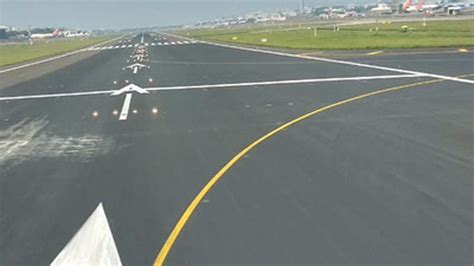
A Norse Atlantic Airways flight en route from Oslo, Norway, to New York City was forced to turn back over the Atlantic Ocean due to a critical maintenance issue detected mid-flight. Flight DI471, carrying 269 passengers, experienced a problem with a potential oil leak in one of its engines, prompting the pilots to initiate a return to Oslo Airport for safety reasons.
The Boeing 787-9 Dreamliner, registration number G-CKHL, departed Oslo at approximately 9:35 AM local time on June 21, 2024. About three hours into the flight, as it traversed the Atlantic, the crew identified a technical malfunction. According to a statement released by Norse Atlantic Airways, “The flight experienced a technical issue which indicated a potential oil leak in one of the engines. As a precautionary measure and in line with our safety procedures, the pilots decided to return to Oslo.”
Data from flight tracking websites confirmed the unusual flight path. The aircraft circled over the North Sea for a period, likely burning off fuel to reduce its landing weight, before heading back towards Oslo. It eventually landed safely at Oslo Airport at approximately 3:00 PM local time, roughly five and a half hours after its initial departure.
Upon landing, the aircraft was immediately inspected by maintenance personnel. Passengers were disembarked and provided with accommodations while Norse Atlantic Airways worked to resolve the issue and arrange alternative travel plans. “We are doing everything we can to minimize the disruption for our passengers,” the airline stated. “Safety is always our top priority, and we appreciate our passengers’ understanding.”
The incident highlights the stringent safety protocols that airlines adhere to, even when it means significant inconvenience to travelers. While the exact cause of the potential oil leak is still under investigation, the decision to turn back demonstrates a commitment to preventing potential catastrophic engine failure over the Atlantic Ocean, where emergency landing options are severely limited.
The grounding of Flight DI471 marks the latest in a series of challenges faced by Norse Atlantic Airways, a budget long-haul carrier attempting to establish itself in a highly competitive market. The airline, which began operations in June 2022, aims to provide affordable transatlantic travel but has struggled with profitability and operational reliability. Incidents like this can further erode passenger confidence and impact the airline’s reputation.
This event also underscores the importance of regular aircraft maintenance and the crucial role of flight crews in identifying and responding to potential safety hazards. The pilots’ decision to prioritize safety, even at the cost of a significant delay and inconvenience to passengers, reflects the industry’s unwavering commitment to risk mitigation.
Norse Atlantic Airways has confirmed that all passengers have been rebooked on alternative flights to New York. The airline is offering compensation and assistance to those affected by the disruption, in accordance with European Union regulations. The grounded aircraft remains in Oslo undergoing thorough maintenance checks to determine the extent of the problem and implement necessary repairs.
Further Analysis and Context
The decision to turn around a transatlantic flight due to a suspected oil leak is a complex one, involving a careful evaluation of various factors. Pilots and airline operations centers must weigh the severity of the potential malfunction against the risks associated with continuing the flight. In this case, the potential for an engine failure over the Atlantic, far from any suitable landing site, likely outweighed the inconvenience of returning to Oslo.
Modern aircraft are equipped with sophisticated monitoring systems that provide real-time data on engine performance. These systems can detect anomalies, such as oil pressure fluctuations or abnormal temperatures, which may indicate a developing problem. When such an anomaly is detected, the crew follows established procedures to assess the situation and take appropriate action.
In the case of a suspected oil leak, the crew would typically consult with the airline’s maintenance team, who can provide guidance based on the available data. Factors to consider include the rate of oil loss, the overall engine health, and the availability of diversion airports along the route. If the risk of engine failure is deemed unacceptably high, the crew will initiate a return to the departure airport or divert to the nearest suitable airport.
The procedure for returning to Oslo involved several steps. First, the pilots would have notified air traffic control of their intention to turn back and requested priority handling. They would then have begun to reduce the aircraft’s weight by burning off fuel. This is a standard procedure for long-haul flights, as landing at maximum takeoff weight can put excessive stress on the aircraft’s landing gear.
While circling over the North Sea, the pilots would have continued to monitor the engine and communicate with the airline’s maintenance team. They would also have prepared the cabin crew for a potential emergency landing, although in this case, the landing was uneventful.
Upon landing in Oslo, the aircraft was met by maintenance personnel, who conducted a thorough inspection of the engine. The inspection would have involved checking for signs of oil leakage, examining the engine’s internal components, and running diagnostic tests. The results of the inspection will determine the extent of the repair work needed and the timeline for returning the aircraft to service.
The impact on passengers was significant. They faced substantial delays and the inconvenience of having their travel plans disrupted. Norse Atlantic Airways is obligated to provide assistance to passengers affected by the disruption, including meals, accommodations, and rebooking on alternative flights. Under European Union regulations, passengers may also be entitled to compensation for the delay.
The incident also raises questions about the operational challenges faced by Norse Atlantic Airways. The airline has ambitious plans to offer low-cost transatlantic travel, but it has struggled with profitability and operational reliability. Incidents like this can further damage the airline’s reputation and make it more difficult to attract and retain customers.
Norse Atlantic Airways’ business model relies on high aircraft utilization to keep costs down. This means that aircraft are often scheduled for multiple flights per day, with minimal time for maintenance. This can put pressure on maintenance teams and increase the risk of mechanical problems.
The airline also faces intense competition from established carriers, such as Delta, United, and American, as well as other low-cost airlines, such as JetBlue. To succeed, Norse Atlantic Airways needs to offer competitive fares while maintaining a high level of operational reliability and customer service.
The long-term impact of the Flight DI471 incident on Norse Atlantic Airways remains to be seen. The airline will need to address the underlying causes of the technical problem and take steps to prevent similar incidents from happening in the future. It will also need to work to restore passenger confidence and rebuild its reputation.
Detailed Explanation of Aircraft Maintenance Procedures
Aircraft maintenance is a critical aspect of ensuring flight safety. Airlines are required to adhere to strict maintenance schedules and procedures, as mandated by aviation regulatory authorities such as the Federal Aviation Administration (FAA) in the United States and the European Aviation Safety Agency (EASA) in Europe.
Maintenance programs are designed to identify and address potential problems before they can lead to accidents or incidents. These programs typically include a combination of scheduled maintenance checks, unscheduled maintenance, and component replacements.
Scheduled maintenance checks are performed at regular intervals, based on the aircraft’s operating hours or calendar time. These checks can range from simple visual inspections to extensive overhauls of the aircraft’s systems and components. The frequency and scope of the checks are determined by the aircraft manufacturer and approved by the regulatory authorities.
Unscheduled maintenance is performed in response to unexpected problems, such as mechanical failures or damage to the aircraft. This type of maintenance can be more challenging, as it often requires troubleshooting and repair work to be performed under tight time constraints.
Component replacements are performed when aircraft components reach the end of their service life or are found to be defective. Airlines maintain a stock of spare parts to ensure that components can be replaced quickly and efficiently.
The maintenance process involves a team of highly trained technicians and engineers. These professionals are responsible for inspecting, repairing, and maintaining the aircraft’s systems and components. They must have a thorough understanding of aircraft mechanics, electronics, and hydraulics.
Maintenance procedures are documented in detail in maintenance manuals and other technical publications. These documents provide step-by-step instructions for performing maintenance tasks and troubleshooting problems.
Airlines use sophisticated computer systems to track maintenance activities and manage their spare parts inventory. These systems help to ensure that maintenance is performed on time and that the necessary parts are available when needed.
The oil system in an aircraft engine is crucial for lubrication and cooling. Oil lubricates the moving parts of the engine, reducing friction and wear. It also helps to cool the engine by carrying heat away from the hot spots.
An oil leak can have serious consequences for engine performance. A loss of oil can lead to increased friction and wear, which can damage the engine. It can also cause the engine to overheat, which can lead to engine failure.
Oil leaks can be caused by a variety of factors, including worn seals, damaged gaskets, and cracked engine components. In some cases, oil leaks can be detected visually, by observing oil dripping from the engine. In other cases, they can only be detected by monitoring the engine’s oil pressure and temperature.
When an oil leak is detected, the engine must be shut down and inspected. The source of the leak must be identified and repaired before the engine can be returned to service.
The Role of Flight Crew in Ensuring Safety
Flight crews play a vital role in ensuring the safety of air travel. Pilots are responsible for operating the aircraft safely and efficiently, while cabin crew members are responsible for ensuring the comfort and safety of passengers.
Pilots undergo extensive training to learn how to operate the aircraft in a variety of conditions. They must also be able to handle emergencies, such as engine failures, fires, and medical emergencies.
Cabin crew members are trained in first aid, emergency procedures, and passenger management. They are also responsible for enforcing safety regulations, such as ensuring that passengers are wearing their seatbelts and that carry-on baggage is properly stowed.
Flight crews work closely together to ensure the safety of each flight. They communicate with each other throughout the flight to monitor the aircraft’s systems and respond to any problems that may arise.
Before each flight, the pilots conduct a pre-flight inspection of the aircraft to ensure that it is in good working order. They check the engine, flight controls, and other critical systems.
During the flight, the pilots monitor the aircraft’s performance and make adjustments as necessary. They also communicate with air traffic control to ensure that the aircraft is following the correct flight path and altitude.
In the event of an emergency, the pilots are responsible for taking appropriate action to protect the safety of the passengers and crew. This may involve diverting to the nearest airport, landing the aircraft in an emergency situation, or evacuating the aircraft after landing.
The Impact of Technology on Aviation Safety
Technology has played a significant role in improving aviation safety over the years. Modern aircraft are equipped with sophisticated systems that help pilots to fly the aircraft safely and efficiently.
These systems include:
- Autopilot: The autopilot system can automatically control the aircraft’s flight path, altitude, and speed. This can help to reduce pilot workload and improve accuracy.
- Flight Management System (FMS): The FMS is a computer system that helps pilots to plan and execute flights. It provides information on the aircraft’s position, altitude, and speed, as well as weather conditions and air traffic control instructions.
- Global Positioning System (GPS): GPS is a satellite-based navigation system that provides pilots with precise information on the aircraft’s location. This can help to improve accuracy and reduce the risk of getting lost.
- Traffic Collision Avoidance System (TCAS): TCAS is a system that helps pilots to avoid collisions with other aircraft. It detects nearby aircraft and provides alerts to the pilots if there is a risk of collision.
- Enhanced Ground Proximity Warning System (EGPWS): EGPWS is a system that warns pilots if the aircraft is getting too close to the ground. This can help to prevent controlled flight into terrain (CFIT) accidents.
These technologies have significantly reduced the risk of accidents and incidents in aviation. They have also made it possible for airlines to operate more efficiently and reduce costs.
The Economics of Low-Cost Transatlantic Travel
Norse Atlantic Airways is one of several airlines that have attempted to offer low-cost transatlantic travel in recent years. The business model is based on offering lower fares than traditional airlines by reducing costs in various areas.
These areas include:
- Aircraft: Low-cost airlines often operate newer, more fuel-efficient aircraft to reduce operating costs. Norse Atlantic utilizes Boeing 787 Dreamliners, which are known for their fuel efficiency.
- Labor: Low-cost airlines often pay their employees lower wages and benefits than traditional airlines. They may also have more flexible work rules.
- Distribution: Low-cost airlines typically sell tickets directly to customers through their websites, rather than using travel agents. This reduces distribution costs.
- Ancillary Revenue: Low-cost airlines often generate revenue from ancillary fees, such as baggage fees, seat selection fees, and food and beverage sales.
The low-cost transatlantic travel market is highly competitive. Airlines face intense pressure to keep fares low, while also maintaining a high level of operational reliability and customer service.
Several low-cost airlines have failed in the transatlantic market in recent years, including WOW Air and Primera Air. These airlines struggled with profitability and operational challenges.
Norse Atlantic Airways faces significant challenges in the transatlantic market. The airline needs to maintain a high level of operational reliability and customer service, while also keeping fares competitive. The Flight DI471 incident highlights the challenges of operating a low-cost airline and the importance of prioritizing safety.
The Future of Aviation Safety
Aviation safety is a constantly evolving field. New technologies and procedures are being developed all the time to improve safety and reduce the risk of accidents and incidents.
Some of the key trends in aviation safety include:
- Increased Automation: Aircraft are becoming increasingly automated, with systems that can assist pilots in flying the aircraft and managing emergencies.
- Improved Data Analysis: Airlines are using data analysis to identify potential safety hazards and improve their safety procedures.
- Enhanced Training: Pilots and other aviation professionals are receiving more comprehensive training to prepare them for a wider range of scenarios.
- Greater Collaboration: Airlines, regulators, and manufacturers are working together to improve aviation safety.
The goal of these efforts is to make air travel even safer in the future. While accidents and incidents will always be a possibility, the aviation industry is committed to reducing the risk of these events and ensuring that air travel remains the safest mode of transportation. The incident with Norse Atlantic flight DI471 is a reminder of the complexities and inherent risks associated with air travel, and the ever-present need for vigilance and adherence to safety protocols.
Frequently Asked Questions (FAQ)
-
What caused Norse Atlantic Flight DI471 to turn back? The flight turned back due to a “technical issue which indicated a potential oil leak in one of the engines,” according to Norse Atlantic Airways. This was done as a precautionary measure and in line with the airline’s safety procedures.
-
Was anyone injured during the incident? No injuries were reported. The aircraft landed safely back at Oslo Airport, and all 269 passengers disembarked without incident.
-
What happened to the passengers of Flight DI471? Norse Atlantic Airways rebooked all passengers on alternative flights to New York. The airline is also providing compensation and assistance to those affected by the disruption, as required by European Union regulations.
-
How safe is it to fly with Norse Atlantic Airways after this incident? While this incident caused disruption, the airline’s decision to turn back demonstrates a commitment to safety. All airlines, including Norse Atlantic, are subject to strict safety regulations and oversight by aviation authorities. The decision to prioritize safety, even at the cost of inconvenience, is a standard practice in the aviation industry. However, passengers should always consider their own comfort level when choosing an airline.
-
What are the standard procedures when a potential oil leak is detected in flight? When a potential oil leak is detected, the pilots will first consult with the airline’s maintenance team for guidance. They’ll assess the rate of oil loss, engine health, and available diversion airports. Fuel may be burned off to reduce landing weight. If the risk of engine failure is deemed too high, the pilots will turn back to the departure airport or divert to the nearest suitable airport. The safety of passengers and crew is always the top priority.
Conclusion
The forced U-turn of Norse Atlantic Airways Flight DI471 serves as a stark reminder of the complexities and inherent risks associated with air travel. While such incidents can cause significant disruption and inconvenience to passengers, they also highlight the stringent safety protocols and the unwavering commitment of airlines to prioritize the well-being of their passengers and crew. The pilots’ decision to return to Oslo, despite the associated costs and logistical challenges, underscores the industry’s dedication to risk mitigation and the prevention of potentially catastrophic events.
The incident also raises important questions about the operational challenges faced by low-cost transatlantic carriers like Norse Atlantic Airways. These airlines operate in a highly competitive market, where they must balance the need to offer affordable fares with the imperative to maintain a high level of operational reliability and customer service. The ability to effectively manage maintenance issues, minimize disruptions, and restore passenger confidence will be crucial to the long-term success of these airlines.
Furthermore, the event underscores the critical role of technology in ensuring aviation safety. Modern aircraft are equipped with sophisticated monitoring systems that provide real-time data on engine performance and other critical parameters. These systems enable pilots and maintenance teams to identify potential problems early on and take appropriate action to prevent accidents and incidents.
Looking ahead, the aviation industry must continue to invest in new technologies, improve training programs, and foster greater collaboration between airlines, regulators, and manufacturers. By doing so, it can further enhance safety, reduce the risk of disruptions, and ensure that air travel remains the safest and most efficient mode of transportation. The lessons learned from incidents like the Flight DI471 U-turn will undoubtedly contribute to the ongoing efforts to improve aviation safety and protect the lives of passengers and crew. The long-term viability of Norse Atlantic Airways and other low-cost carriers in the transatlantic market will depend on their ability to demonstrate a consistent commitment to safety and operational excellence. They must convince passengers that they can provide affordable fares without compromising their well-being. This requires a combination of efficient operations, effective maintenance practices, and a strong safety culture.









